Jaundice in newborns is not just often - but it is almost always. Any mother will easily notice the first symptoms. The baby becomes unusually dark or as if filled with yellowness, whites of the eyes turn yellow. What is a disease or feature of a small child? This will become clear later, after several days of observation. Most often, there is no reason for concern, this condition is due to some physiological characteristics of the body of a newborn baby.
Why does jaundice appear?
 Here, bilirubin is primarily “to blame”. What is it and where does it come from? It's pretty simple. A child who has not yet been born has special blood with special (fetal) hemoglobin. It carries oxygen through the baby’s blood vessels. When the baby is born, it begins to breathe lightly. And then the composition of the blood changes: “living” hemoglobin appears in it, and the fetal - is destroyed. This is where bilirubin forms. The child does not need it, and the small organism begins to get rid of it.
Here, bilirubin is primarily “to blame”. What is it and where does it come from? It's pretty simple. A child who has not yet been born has special blood with special (fetal) hemoglobin. It carries oxygen through the baby’s blood vessels. When the baby is born, it begins to breathe lightly. And then the composition of the blood changes: “living” hemoglobin appears in it, and the fetal - is destroyed. This is where bilirubin forms. The child does not need it, and the small organism begins to get rid of it.
For a baby this is a very difficult matter. Just because bilirubin can not be withdrawn. First, it enters the liver and mixes with special enzymes there, then it dissolves in the urine and is then easily excreted. If the liver fails and there is a lot of bilirubin in the blood, jaundice will begin.
The causes of pathogenic jaundice are completely different. They are most often caused by a violation of the outflow of bile from the body due to the following conditions:
- blood group incompatibility;
- rhesus conflict;
- viral damage to the liver;
- genetic metabolic disorders;
- hereditary diseases;
- hormonal disorders;
- mechanical damage to the biliary tract or liver.
VIDEO:
Norm of bilirubin
In the blood of a newborn baby, bilirubin should be from 8.5 to 20.5 μmol / l (micromol per liter). The unit of measure is quite complex, but you can not go into it. If it’s really interesting, a blood test takes place at the molecular level. If the analysis shows that the bilirubin content is slightly higher than normal, the doctor understands: the baby’s body does not have time to cope with the load. Real jaundice occurs when the level of bilirubin exceeds 35 μmol / L.
And yet she is different ...
Why jaundice appears is already clear. Why are there any difficulties with bilirubin withdrawal? Could this be a sign of pathology? Unfortunately yes. Doctors distinguish between two groups of jaundice - physiological and pathological. Consider all types of jaundice from the rarest to the most common.
Pathological types of jaundice
They are rare, but require mandatory medical supervision and treatment. With pathological jaundice, there are always additional symptoms. Some may be noticed by a mother or someone from the family, while others are recognized only by a doctor.
Hemolytic disease
Among all babies who become ill with jaundice of newborns, less than 1% falls on those suffering from hemolytic disease. Its reasons:
- Rhesus conflict of mother and baby (most often);
- mismatch in blood groups (very rare);
- incompatibility by antigens (almost never occurs).
However, such jaundice is quickly recognized. The skin and sclera of the baby turn yellow not in a few days, but almost immediately after birth. The baby looks lethargic and sleepy. The doctor, examining the baby, will feel an increase in the spleen and liver. All these signs show that the newborn urgently needs help, and then the doctors begin immediate treatment. The worst case is jaundicein which bilirubin poisons the brain of the baby.
Obstructive jaundice
A rare, but still pathology. There are several reasons for obstructive jaundice:
- gall bladder problems;
- violation of patency of the biliary tract;
- liver problems.
Most often, obstructive jaundice is caused by genetic disorders or birth injuries of the baby. Manifestations of this disease become noticeable when the baby is two to three weeks old. The skin at the same time looks not just yellow, but with a greenish tint. The baby's chair becomes abnormally light, with almost no color. The doctor will feel that the liver is compacting and the spleen is enlarged. If there is a suspicion of obstructive jaundice, various additional examinations are prescribed - for example, ultrasound. Treatment will depend on the type of pathology..
There are also borderline conditions when prolonged postpartum jaundice goes into pathology:
- Conjugation jaundice associated with poor liver function. Liver enzymes bind bilirubin poorly and cannot cope with its withdrawal from the blood.
- Nuclear jaundice occurs with a sharp increase in bilirubin during postpartum jaundice. In this case, bilirubin penetrates the nervous system and exerts its toxic effect on it.
- Hepatic jaundice appears when liver cells are damaged by viruses or bacteria.
Physiological jaundice
Now all doctors have recognized that this is not a disease, but one of the options for the normal state of a newborn baby. However, in this situation, the baby must be carefully monitored so as not to miss possible pathologies.
Breast milk jaundice
Another rare case. It occurs when a mother has a lot of estrogen in her milk (this is a female sex hormone). Then the baby’s liver first begins to withdraw estrogen, and then bilirubin. In this case, the baby remains icteric for up to three months. At the same time, the baby develops well - he has a good appetite, sleep and weight gain and height. This condition is not dangerous and goes away by itself.
If a baby has jaundice of breast milk, mothers often ask: Isn't it better to wean the baby from the breast? There can only be one answer: no better! Yes, without breast milk the baby will stop “turning yellow.” But how much of everything useful and important will he receive in this case? So breastfeeding must continue.
Neonatal jaundice
And finally, the most common form. This is the jaundice that appears in most children. It does not apply to diseases and does not require treatment. Such jaundice of the newborn passes by itself and does not lead to complications. True, there is another view: if the jaundice appeared, then the baby’s liver is still overloaded. But the baby can be helped.
Symptoms
When more than two weeks pass, and the baby's skin has not acquired a normal color, it is worthwhile to see a doctor. Before treating jaundice, an analysis of the level of bilirubin in the blood will be prescribed. The level of bilirubin depends on many factors and it is impossible to unambiguously interpret the test results.The doctor will draw conclusions about the child’s state of health from the general picture of the state of health.
Symptoms of pathological types of jaundice are manifested in a change in the color of the skin. The differences consist in the time of their appearance and some features of the manifestation:
- a change in skin color appears immediately after birth;
- after three to four days, the yellow color becomes brighter, all symptoms intensify;
- yellowness of the integument lasts more than one month;
- the onset of jaundice symptoms is undulating: it will appear, then disappear;
- in addition to yellow, the skin color can acquire a green tint.
In addition to the discoloration of the skin, other symptoms are added:
- feces are discolored;
- urine is dark in color;
- bruises spontaneously appear;
- there is an increase in the liver and spleen;
- the general well-being of the child worsens.
Jaundice Treatment
If we are talking about pathology, then any therapy is prescribed by a doctor. Most often, the baby and mother go to the hospital, where they carry out all the necessary procedures. For example, if a mother and a child have a different Rh factor or other signs of blood incompatibility, then transfusions are most often prescribed. For one procedure, the baby can replace up to 70% of the total amount of blood. In difficult cases, transfusions are repeated several times.
These measures help get rid of pathological bilirubin, but can weaken the baby. Therefore, additional therapy is often prescribed: antibiotics, physiotherapy and so on.
Obstructive jaundice often requires surgical intervention. An informed decision is usually made by a whole commission of doctors who carefully examine the child and determine all the necessary measures. Such treatment and rehabilitation are also carried out in a hospital setting.
- attach the newborn to the chest as early as possible (this stimulates the metabolic processes);
- full breastfeeding;
- the diet of a nursing mother so that the baby does not have digestive problems;
- sun baths;
- walks in the open air.
Unfortunately, the last point cannot be fulfilled if it is cold outside. But in spring, summer or warm autumn, taking a baby to fresh air is a must. In summer, in calm sunny weather, you can open children's arms and legs for several minutes. This is especially useful in light shadows - for example, under a tree, so that diffused light gets on the child. The main thing is that the baby does not freeze.
Such care for the newborn will help to remove bilirubin from the child’s body. As a result, the baby will not only have jaundice. Another child will become healthier and will feel better.
Sometimes, in addition to breast milk, radiation is prescribed with a special lamp for the treatment of jaundice - phototherapy. During the procedure, the child’s eyes are covered with a bandage or goggles and placed under the lamp. The course is 96 hours.
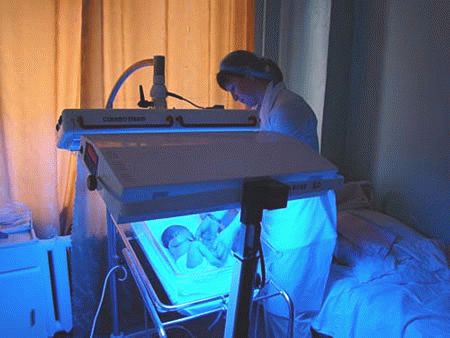
When conducting phototherapy, side effects can be observed. The child may appear drowsy, the skin begins to peel off and there is a disorder of the stool.
Sun baths have the same effect.The body of the baby in the light begins to actively produce vitamin D. It accelerates the process of removing bilirubin from the blood.
With severe jaundice, glucose and activated carbon in tablets can be prescribed by a doctor. Glucose improves the active work of the liver. Activated carbon absorbs harmful substances like a sponge, including bilirubin. Next, coal, together with bilirubin, is excreted naturally with feces.
The doctor develops a methodology for the treatment of pathological types of jaundice, depending on the diagnosis. All factors and circumstances of the birth of a child are taken into account. The course of childbirth and pregnancy, maternal diseases, test results and ultrasound. Sometimes consultation of narrow specialists is required; surgeon or endocrinologist.
In the treatment of jaundice, different types of therapy are used:
- Antiviral.
- Antibacterial.
- Cholagogue.
- Detoxification.
- Immune
They are used both individually and in combination under close medical supervision. It depends on the causes of jaundice.
Consequences and problems
In pathological conditions, it is impossible to predict how quickly the baby will recover. First of all, it all depends on the causes of the disease and its severity.. That is why it is especially important to observe the baby in the first days of life. What to look for?
- Jaundice occurred a few hours after the birth of the baby (blood conflicts are possible).
- The child is poorly developed, he is sleepy and lethargic (a significant excess of bilirubin in the blood, including with hemolytic disease).
- Jaundice is accompanied by convulsions, a constant cry (it may be nuclear jaundice). With this diagnosis, the child may develop hearing impairment, motor pathologies, in the most severe case, the baby may die.
- The newborn has birth injuries.
As soon as the jaundice begins in the newborn, careful observation is necessary to prevent the development of pathologies. If the treatment is done on time, the baby will recover very soon and will grow healthy.
Physiological jaundice does not cause any complications. It can last two to three weeks. Most babies get rid of jaundice when they turn one month old. If the reason is in the mother’s milk, then the condition can drag on for another one to two months. After that, the skin and eyes of the baby are completely freed from the yellow tint. All this time, the child fully develops. The main thing for him is the care of his mother, relatives and doctors. And then the baby will grow up healthy and happy.
Physiological jaundice in healthy children does not harm the body, does not affect the further development of the child. Pathological jaundice increases the risk of cirrhosis or liver cancer with age. In 90% of children who have had hepatitis in infancy, the effects of jaundice remain for life. This translates into weakened immunity and poor liver function.
Postponed nuclear jaundice in the future can lead to deafness, complete or partial paralysis, mental retardation. The toxic effect of a high level of bilirubin on the nervous system has the most serious consequences.


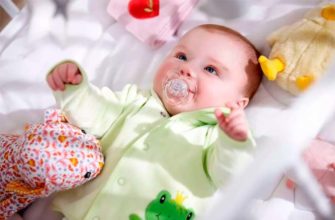
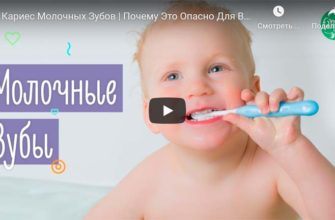
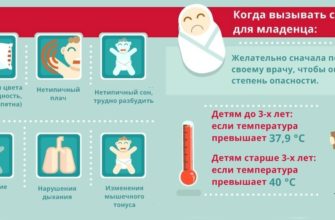


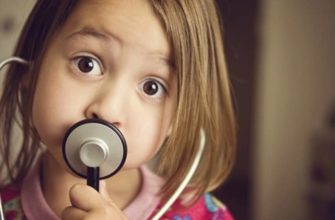

My second child had jaundice as a result of entwining with an umbilical cord, lying under a lamp in the hospital, the majority went to discharge, although it took longer than, for example, the older one had a neonatal one.
Before the birth of the baby, I watched the broadcast of D. Komarovsky, and when we had jaundice, I did not worry. But the other mothers, who did not know anything about this phenomenon, were very nervous. As a result, there is a violation of lactation and artificial feeding. I think it is necessary for doctors to educate mothers, otherwise the panic will continue to walk around maternity hospitals.
With jaundice, newborn babies often encounter. Young mothers should not worry, because the disease is treatable, it especially helps the child cope with jaundice frequent walks on a sunny day.
And we were prescribed the drug “Galstena” in the hospital. We started taking it from the 6th day after birth. We are now three weeks old, but elevated jaundice still persists :(
In 1988, a daughter was born, they didn’t bring a day2, then she called the doctor into the corridor, asked her Russian husband or not (very dark), found out that she’s yellow and nothing else, they spent a week or more in the maternity hospital, I don’t remember the injury of the cervical spine in the card, already at school, we had a hematologist’s visit, they checked the thyroid gland, drank iodomarin tablets for a long time (antistramine), then they blew blood and said that we had already had hepatitis, I said no. I read your article, is it ill? There is a constriction of the gallbladder, at the moment, there is baldness, donated blood to the thyroid gland, normal, sex hormones are normal, we are waiting for hair analysis, development was normal, studied well, the trichologist analysis for hormones showed that more than men, prescribed rubbing lifelong, what else to check and hepatitis was ill or to consider that he was not ill, is it better to say everywhere what is ill? How to check a song, at school a gastroenterologist directed to an Egyptologist, ultrasound showed a spleen enlarged
How to check the liver, spleen
My sister, the child from the maternity hospital had jaundice, they said there was nothing wrong with prescribing drugs. The local doctor came every week, said that soon the child would have a yellow face, they turned completely yellow a month later and they put Belarus in the hospital as much as 200, they were already 9 days decreased to 160, all the procedures are done but practically without result. If they knew that this would happen, then they went to the hospital right away.
the baby was born, the jaundice does not seem to panic. well, it’s not lethargic, not sleepy, it’s not a single ship, there is only one heart murmur. noise doesn’t mean shaw, it’s a vice because we have no doctors in our family, they smeared it with camphor, but I know sho you can’t do this at all, I don’t know, because our crumbs are the most expensive thing in the world
My second and third child had jaundice of breastfeeding. With the second lay the hospital brought droppers interrupted breastfeeding for 5 days. By three months old, bilirubin was normal. BUT in the hospital we picked up other diseases.
With the third, a little bit prematurely 37-week-old, we didn’t go anywhere, we just waited until it passed, we did not interrupt breastfeeding, we gave coal (did not help), we tested for bilirubin every month. By 4 months, bilirubin fell to 40, by 6 months passed, vaccinations began to be done at 6 months.
The use of phototherapy at home is as effective as in a hospital, but much more comfortable and safer for the baby and mother.